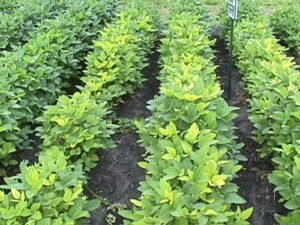Yellowing leaves on soybeans? That has to be a potassium deficiency, right? Maybe not. While yellowing in the middle or upper canopy is usually a sign of potassium deficiency, it could mean something worse is lurking below the soil surface. Often, a superficial glance isn’t enough to get to the root of the problem.
“Symptoms don’t always lead us to the cause of those symptoms,” said Matt Montgomery, Pioneer Field Agronomist.
Going through a checklist to eliminate potential causes provides the best chance at proper diagnosis and treatment.
Herbicide damage, fungal disease and pest pressure can also lead to yellow leaves. If those are ruled out, the answer could be underground. Soybean cyst nematodes (SCN), the tiny, worm-like parasites, can decrease yields substantially without inducing obvious symptoms. However, SCN can produce yellow leaves when populations are high.
“Soybean cyst females love to feed on the root material of plants,” Montgomery said. “They slowly suck away water, photosynthate and nutrients. We don’t usually see above-ground symptoms of SCN unless the ground is under stress and the field has a high level of SCN.”
SCN management comes in two forms: Preventing the infestation of fields and reducing the nematode populations in infested fields.
Preventing the infestation of fields by rotating resistant soybean varieties is the first step. If infestation has already occurred, early identification is crucial to developing an SCN management plan for profitable soybean production. Stopping or slowing the spread of SCN can prevent losses in the following years.
The SCN Coalition provides the following recommendations for developing an SCN management plan:
- Test fields to know the numbers
- Rotate resistant varieties
- Rotate to non-host crops
- Consider using a nematode protectant seed treatment



